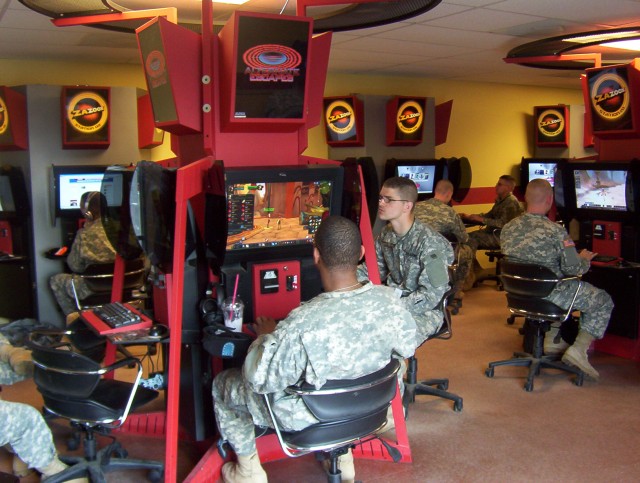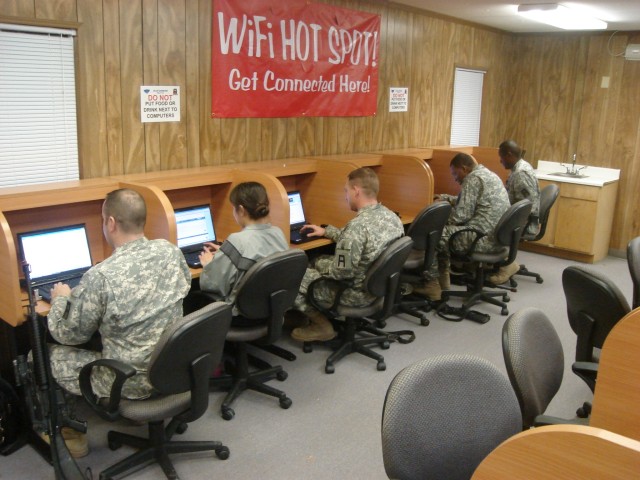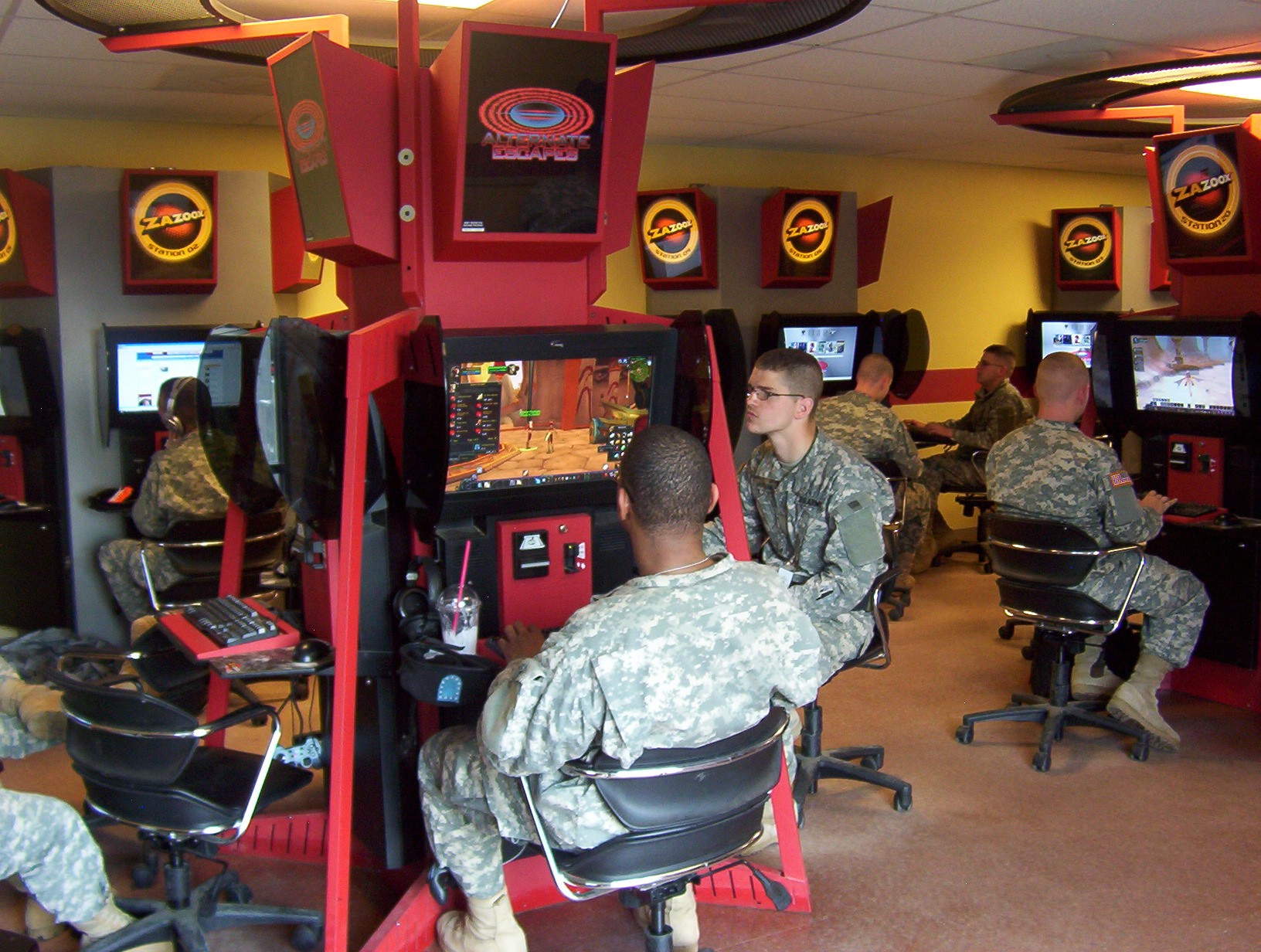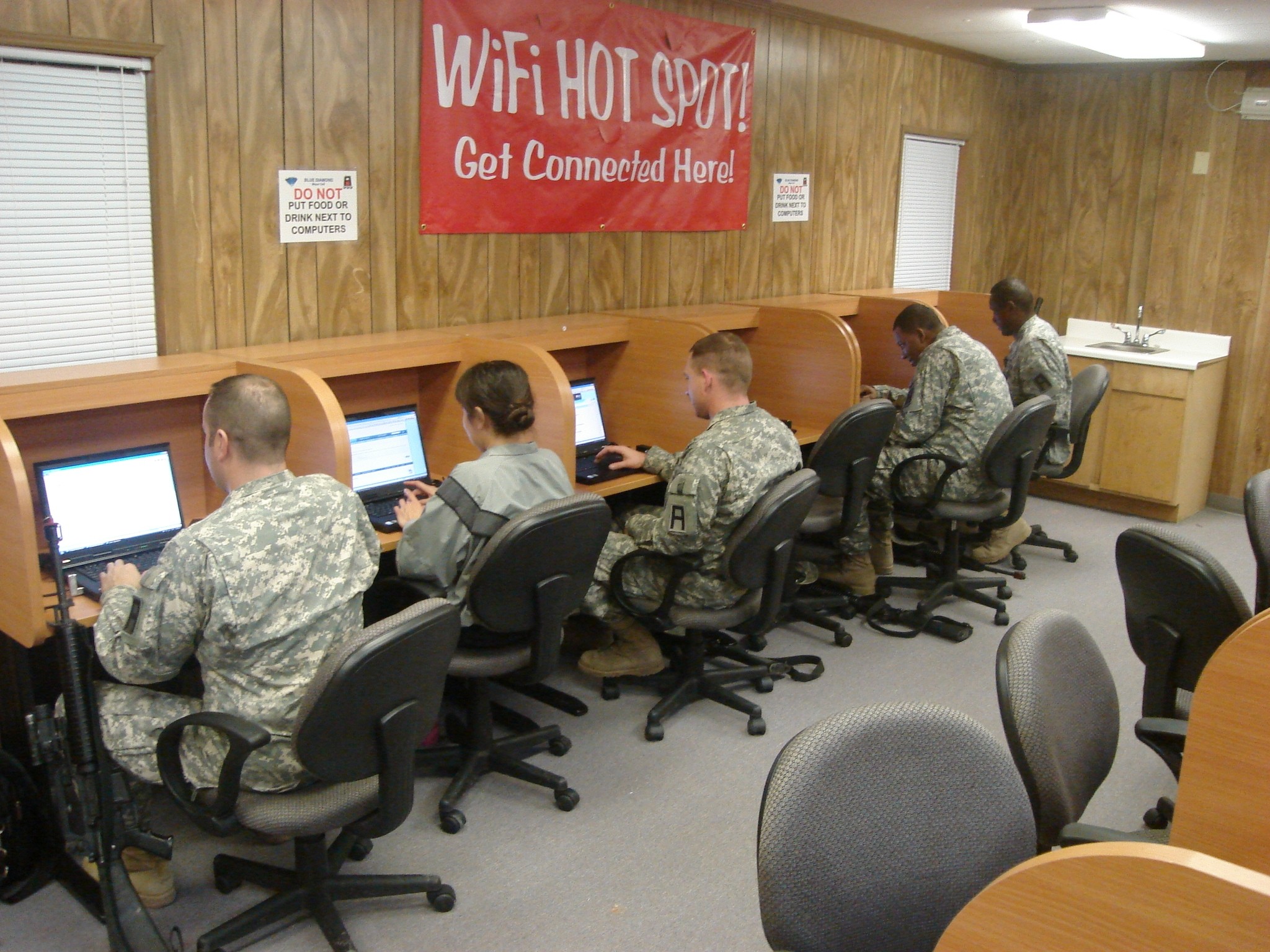ALEXANDRIA, Va. - Lt. Gen. Robert Wilson, Commanding General, Installation Management Command, asked the Family and MWR CommandAca,!a,,cs Army Recreational Machine Program to present ideas to improve the quality of life for Soldiers and to generate new sources of income for MWR programs. After a briefing provided by Don Rojas, ARMP General Manager, Lt. Gen. Wilson directed that ARMP Aca,!A"move outAca,!A? and provision Internet services into barracks and other garrison locations to meet the substantial unmet demand for connectivity that Soldiers confronted.
In the two years since those meetings, ARMP has provisioned Internet into barracks and other garrison locations at more than 30 garrisons in the continental U.S. and Germany. This is in addition to ARMPAca,!a,,cs efforts to provide garrisons the capability to provide free Internet support for Wounded Warriors. Provisioning for another handful of garrisons is underway, pending the delivery of circuits and the build-out of the infrastructure needed to carry connectivity to the end user.
Rojas explained that ARMPAca,!a,,cs business model is structured to support the SoldierAca,!a,,cs lifestyle. Soldiers using FMWRCAca,!a,,cs service do not have to sign long-term contracts tying them to vendors who install customer on-premise receiver devices. Instead, they are offered flexible subscription plans permitting hourly, daily, bi-weekly or monthly subscription options.
This model gives Soldiers maximum flexibility based on the unpredictable nature of their training and deployment regimens.
Aca,!A"Soldiers pay only for the Internet connectivity that they use which contrasts with traditional vendor delivered services where the customer pays for the Internet or cable TV regardless of whether they use it or not,Aca,!A? Rojas said.
Aca,!A"For Soldiers, the ability to connect to the Internet in a convenient, no hassle and reliable way becomes a QOL enabler because discretionary time is so precious to our Soldiers,Aca,!A? he added.
The pilot program began at Forts Benning and Gordon in early 2007.
Aca,!A"We found as we began that we had a learning curve to overcome. But we also saw a substantial market with unmet demand, and we had tremendous support from the command and MWR leadership at these installations,Aca,!A? said Rojas.
ARMP returns 35% of gross revenues from all subscriptions directly back to the installation. After operating expenses and depreciation are deducted, all residual profits are deposited into the MWR Trust Fund. This is the central non-appropriated fund where net profits from all ARMP operations and AAFES dividends are deposited to earn interest until they are used to fund major construction projects for MWR activities.
The program was interrupted in December 2007, when ARMP was tasked to provide all Wounded Warriors with personal computers, Internet connectivity, phone service, and cable television in all government-provided housing and barracks.
ARMP executed that mission by March 31, 2007 and continues to provide WTU commanders with sustainment and support for our Wounded Warriors. Additionally, ARMP has been tasked to Support Soldier and Family Assistance Centers (SFACs) with their requirements for Internet support, computers, printers, and multi media.
Wounded Warriors now receive free Internet service at the 40 Warrior Transition Units (WTU) across Germany and the U.S., thanks to funding provided through Army Family and Morale, Welfare and Recreation Command (FMWRC) from the U.S. Army Installation Management Command (IMCOM).
Aca,!A"When we received the mission to support our WTUs, we largely set aside our mission to provision pay-as-you-go Internet support to other Soldiers living in barracks and focused all of our resources on support for Wounded Warriors,Aca,!A? Rojas said.
Aca,!A"Once the initial objective was achieved, we transitioned from ramp-up and execution to sustainment for WTUs and reallocated our efforts back to providing connectivity for other Soldiers living in barracks.Aca,!A?
Because of the initial successes with WTU and fee-based Internet connectivity, requests from garrisons for support has rapidly grown and expanded into areas beyond barracks and traditional MWR Internet cafes. To date, about 50 garrisons in Europe, Asia and the U.S. have been provided commercial Internet connectivity. Demand has grown to such an extent that circuits are being upgraded at many of these garrisons. Another dozen or so garrisons have requested support and are awaiting build out.
One of the challenges that MWR programs face is the limitation on the access and use of the military net imposed to protect the network from malicious attacks and electronic penetrations that jeopardize national security. These restrictions limit the abilities of Army libraries, Youth Tech Labs, MWR web pages and other program users to access the Internet for legitimate end-user requirements.
As a consequence, ARMP has been working with the Network Enterprise Technology Command and garrison staffs to provide commercial Internet connectivity to support these programs that is not dependent on the MILNET.
Aca,!A"We have received tremendous support from many garrison Director of Information Management and Signal Command staffs assisting us with the implementation of commercial network solutions in order to provide connectivity,Aca,!A? Rojas said. Aca,!A"In coordination with these professionals, we ensure that there is no cross-connectivity to any portions of the MILNET.Aca,!A?
Another spinoff of these efforts is supporting Army National Guard Soldiers preparing for deployment at Coalition Operation Locations.
Buildings at COLs are usually modular construction and connectivity to the Internet was virtually non-existent. Nevertheless, ARMP has been able to accommodate requests for support. To date, COLs at Forts Riley, Carson, Sill, Hood, Lewis, Stewart, Dix, Bliss and Camp Shelby have been provided with connectivity, and enhancements to service is ongoing. Surveys have been completed at Forts Bragg and McCoy and Camp Atterbury, and provisioning of services will be completed at those locations later this year.
Aca,!A"The effort to support these Soldiers has been particularly fulfilling. Connectivity is a fundamental quality of life enabler for these Warriors,Aca,!A? Rojas said. Aca,!A"It enables them to connect with loved ones and take care of business, practice language skills, and continue with education requirements. The service extends far beyond email and connecting to YouTube and MySpace.Aca,!A?
Camp Shelby in Hattiesburg, Miss., is a perfect example, according to Rojas. At Camp Shelby, there are four COLs. All are Aca,!A"downrangeAca,!A? and miles away from the main post. There is no running potable water or electrical infrastructure. The ARMP worked with the garrison staff and 1st Army staff to provide a temporary solution for the connectivity that involves bringing signal in via satellite and using portable generators for power.
To provide Soldiers with a suitable location, ARMP purchased and installed four classroom trailers and installed student work desks, laptops and a printer so that Soldiers at each COL have an Aca,!A"out of the weatherAca,!A? location to support their needs for Internet connectivity.
Using wireless, satellite dishes, or existing fiber or copper cables not being used for other purposes, ARMP engineers solved the problem of connectivity. All thatAca,!a,,cs left is for the Soldier to sign up for the service with his or her debit or credit card.
As soon as resources permit, the same will be true in barracks and other select locations Army-wide: a debit card and a WiFi-ready computer are all a Solder will need to access the Internet.






Social Sharing